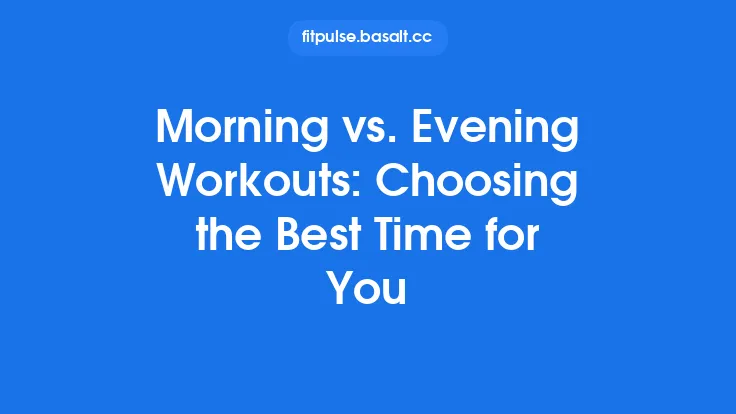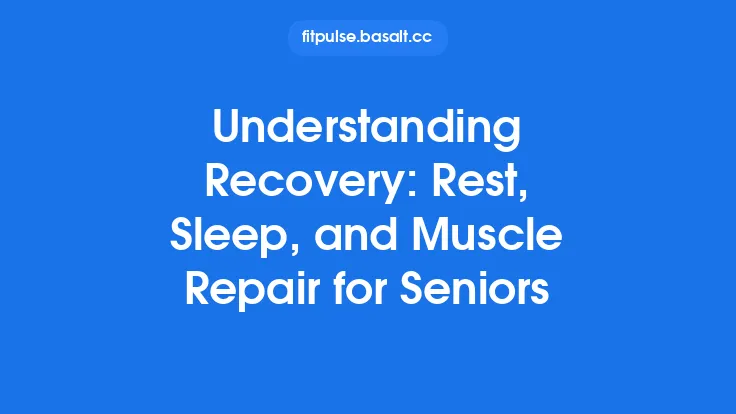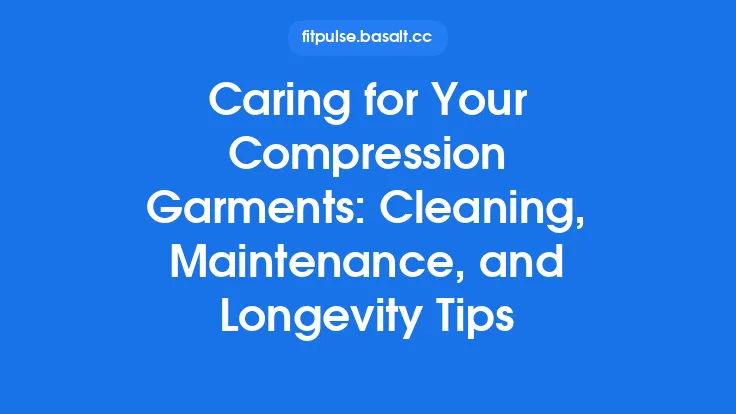When the final rep is completed and the sweat‑soaked shirt is peeled off, the work of recovery begins. For many athletes, the next step involves slipping on a piece of compression apparel designed to help muscles return to their pre‑exercise state more quickly. Two of the most common options are compression socks and compression sleeves. While they may look similar at a glance—both are tight‑fitting, elastic garments that hug the lower leg—they differ in several key ways that can influence how effective they are for post‑workout recovery. Understanding those differences helps you decide which tool best aligns with your recovery goals, training volume, and personal preferences.
Overview of Compression Socks and Sleeves
Compression socks are full‑length garments that extend from the foot up to just below the knee (or sometimes to the mid‑calf). They cover the foot, ankle, and calf, providing a continuous band of pressure along the entire lower‑leg surface. Because they include the foot, they also help manage fluid accumulation in the arch and ankle region.
Compression sleeves, on the other hand, are open‑ended tubes that typically start at the ankle or just above the foot and end just below the knee. They leave the foot exposed, which can be advantageous for athletes who need to wear shoes immediately after a session or who prefer a cooler foot environment. Sleeves are often available in calf‑only, shin‑only, or combined calf‑and‑shin configurations.
Both products are made from elastic fibers (commonly a blend of nylon and spandex) that allow the garment to stretch and then exert a gentle, consistent pressure on the underlying tissues. The pressure is usually measured in millimeters of mercury (mmHg) and can range from light (8–15 mmHg) to moderate (15–20 mmHg) for most recovery‑focused items.
Design and Pressure Application
Coverage Area
- Socks: By encompassing the foot, socks address swelling that can occur in the plantar arch, metatarsal heads, and ankle joint. This is particularly useful after activities that place a lot of load on the forefoot (e.g., running, basketball, or high‑intensity interval training).
- Sleeves: Because they stop above the foot, sleeves concentrate pressure on the calf muscles (gastrocnemius, soleus) and the shin (tibialis anterior). They are ideal when the primary concern is calf muscle fatigue or shin splints.
Pressure Distribution
- Uniform vs. Targeted: Socks tend to deliver a more uniform pressure gradient from the foot upward, whereas sleeves can be engineered to apply slightly higher pressure in the mid‑calf region where the muscle bulk is greatest. Some sleeve designs incorporate a “zone‑compression” pattern that intensifies pressure over the gastrocnemius while easing off near the ankle.
- Edge Effects: The open end of a sleeve eliminates the “cuff” that can sometimes feel restrictive at the top of a sock. For athletes who experience discomfort from a tight cuff, sleeves may feel more breathable and less likely to cause a “pinching” sensation.
Material Thickness and Breathability
Both socks and sleeves are typically constructed from a single‑layer or dual‑layer knit. However, because sleeves do not need to accommodate the foot’s shape, manufacturers can use a slightly thinner yarn in the ankle region, reducing bulk and heat retention. This can be beneficial for post‑workout sessions where the athlete wants to cool down quickly.
Specific Recovery Benefits for Post‑Workout Use
Reduction of Delayed‑Onset Muscle Soreness (DOMS)
The gentle external pressure applied by both socks and sleeves helps to limit the micro‑trauma that accumulates during eccentric loading. By compressing the muscle fibers, the garments reduce the amplitude of muscle oscillation during the immediate post‑exercise period, which can blunt the inflammatory response that leads to DOMS.
Enhanced Venous Return
Compression assists the venous system in moving deoxygenated blood back toward the heart. This accelerated venous return can lower the pooling of blood in the lower leg, decreasing the likelihood of post‑exercise swelling (edema). While both socks and sleeves provide this benefit, socks may have a slight edge for athletes who experience ankle swelling because they also compress the ankle joint.
Fluid Redistribution
After intense activity, interstitial fluid can accumulate in the foot and lower calf. Socks, by covering the foot, help to “push” this fluid upward toward the thigh, where it can be more efficiently reabsorbed. Sleeves, lacking foot coverage, rely on the calf’s own musculature and the surrounding compression to achieve a similar effect, which may be sufficient for workouts that place less stress on the foot.
Temperature Regulation
Post‑exercise recovery often involves a period of cooling to reduce metabolic activity in the muscles. Sleeves, with their open foot design, allow for better airflow around the foot and ankle, facilitating faster heat dissipation. Socks, especially those made from thicker yarns, can retain warmth longer, which some athletes find beneficial for maintaining a mild “heat‑therapy” effect that promotes blood flow.
Practical Considerations
Ease of Application
- Socks: Putting on a full compression sock can be more challenging, particularly after a sweaty workout when the skin is moist. The foot must be guided into the toe box, and the garment must be pulled up the calf without creating folds.
- Sleeves: Sleeves are generally easier to slide onto the leg because there is no foot component. This can be a decisive factor for athletes who need to transition quickly from training to other activities (e.g., travel, meetings).
Compatibility with Footwear
If you plan to wear shoes immediately after your session—perhaps for a cool‑down walk or a post‑workout mobility routine—sleeves are the more convenient option. Socks can be worn under shoes, but the added bulk may feel uncomfortable, especially if the shoes are already snug.
Sensory Feedback
Some athletes report that the constant pressure of a sock provides a “grounded” feeling that helps them gauge how tight the compression is. Sleeves, lacking foot coverage, can feel less “anchored,” which may be preferable for those who dislike the sensation of a garment pulling on their toes.
Hygiene and Skin Health
Because socks cover the foot, they can trap sweat and increase the risk of fungal issues if not changed promptly. Sleeves, leaving the foot exposed, allow the skin to dry more quickly, reducing the likelihood of moisture‑related irritation. However, both garments should be changed after each use to maintain skin health.
Situational Recommendations
| Situation | Preferred Option | Rationale |
|---|---|---|
| Long‑distance running or marathon recovery | Compression socks | Foot and ankle swelling are common; socks address fluid buildup in the entire lower leg. |
| Heavy weight‑lifting focusing on calf raises | Compression sleeves | Targeted calf pressure without unnecessary foot coverage; easier to wear with post‑workout shoes. |
| Post‑HIIT session with high sweat output | Compression sleeves | Faster drying, less bulk, and easier to don when the skin is moist. |
| Rehabilitation after ankle sprain (post‑acute phase) | Compression socks | Provides additional ankle support and helps manage residual swelling. |
| Hot climate training where rapid cooling is desired | Compression sleeves | Open foot design promotes airflow and quicker temperature reduction. |
Potential Drawbacks and Limitations
- Over‑Compression: While most recovery garments stay within safe pressure ranges, an overly tight fit can impede arterial inflow, paradoxically reducing oxygen delivery. This risk is higher with socks because the foot’s narrowest points (the arch and ankle) can become “pinched” if the garment is too small.
- Limited Joint Support: Neither socks nor sleeves are designed to stabilize joints. Athletes seeking joint protection should look to dedicated braces or support sleeves that incorporate reinforced panels.
- Adaptation Period: New users may experience a brief sensation of tightness or tingling as the circulatory system adjusts to the external pressure. This typically subsides within a few minutes of wear.
- Aesthetic Preference: Some athletes simply prefer the look of one style over the other, which can affect compliance. Consistent use is essential for any recovery benefit, so personal comfort should not be overlooked.
Cost and Value Assessment
Compression socks generally command a slightly higher price point than sleeves, primarily because they require more material and a more complex manufacturing process (foot shaping, toe reinforcement). A mid‑range pair of socks can range from $30 to $60, while comparable sleeves often sit between $20 and $45. When evaluating cost, consider:
- Frequency of Use: If you plan to wear the garment after every training session, a higher‑quality, slightly more expensive option may prove more durable.
- Replacement Cycle: Socks tend to wear out faster at the toe and heel due to friction with shoes, potentially necessitating more frequent replacement.
- Multi‑Purpose Utility: Some athletes use socks for both recovery and as a mild performance aid during low‑intensity cardio. If you intend to double‑dip, the added expense may be justified.
Making an Informed Choice
Choosing between compression socks and sleeves for post‑workout recovery ultimately hinges on three practical factors:
- Targeted Area of Concern – If foot and ankle swelling are prominent, socks provide comprehensive coverage. If the primary issue is calf muscle fatigue, sleeves deliver focused compression without excess material.
- Post‑Session Logistics – Consider how quickly you need to transition to shoes, travel, or other activities. Sleeves win on speed and convenience; socks win on all‑around support.
- Personal Comfort and Climate – In hot, humid environments, the open‑foot design of sleeves can improve comfort. In cooler settings, the added warmth of socks may be beneficial.
Both garments share the core principle of applying graduated pressure to aid venous return and reduce post‑exercise fluid accumulation. When selected with the above considerations in mind, either option can be a valuable component of a well‑rounded recovery protocol. The key is consistency: wearing the chosen compression piece for the recommended 15‑30 minutes after training (or longer if desired) maximizes the physiological benefits and helps you bounce back faster for the next session.





